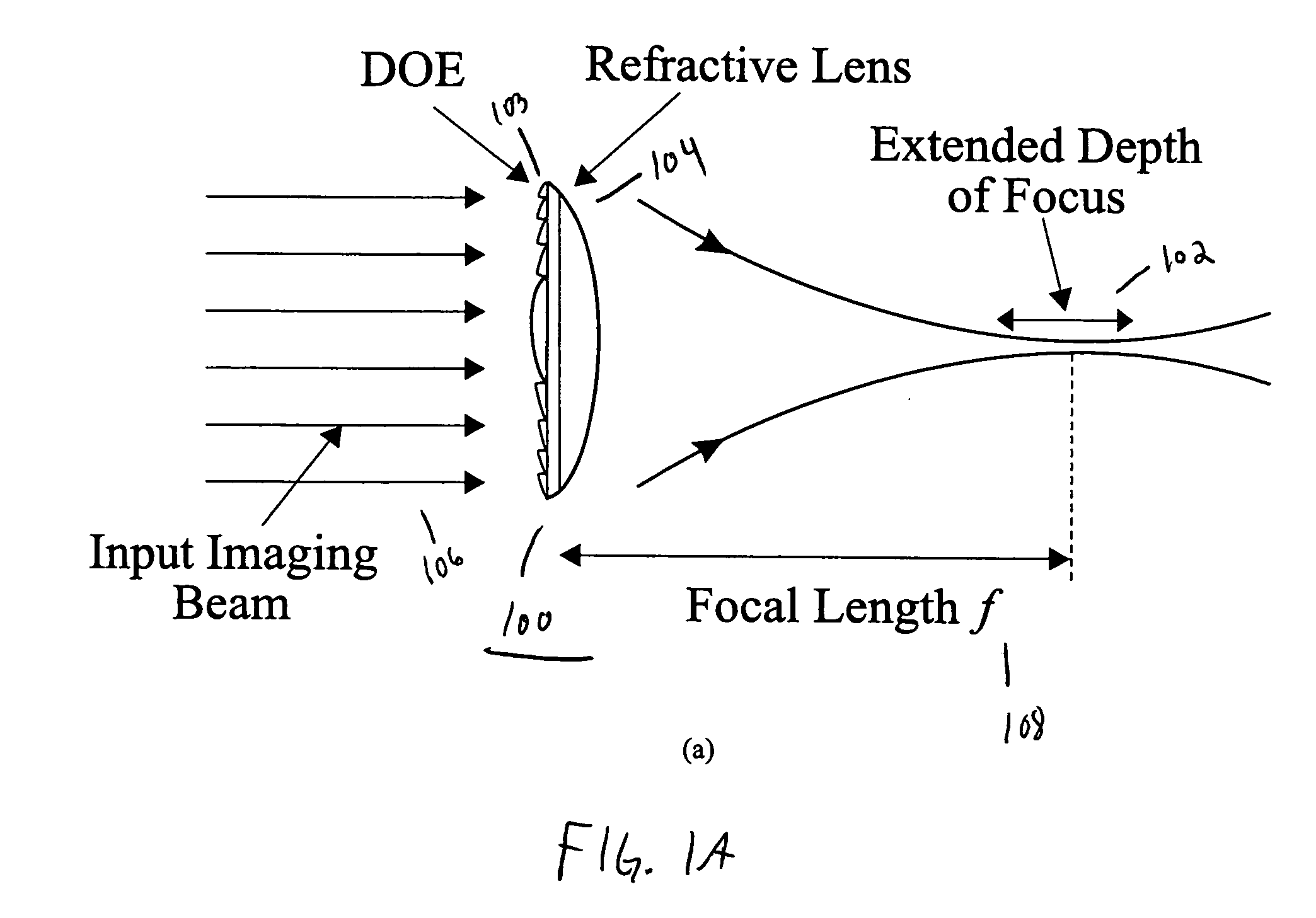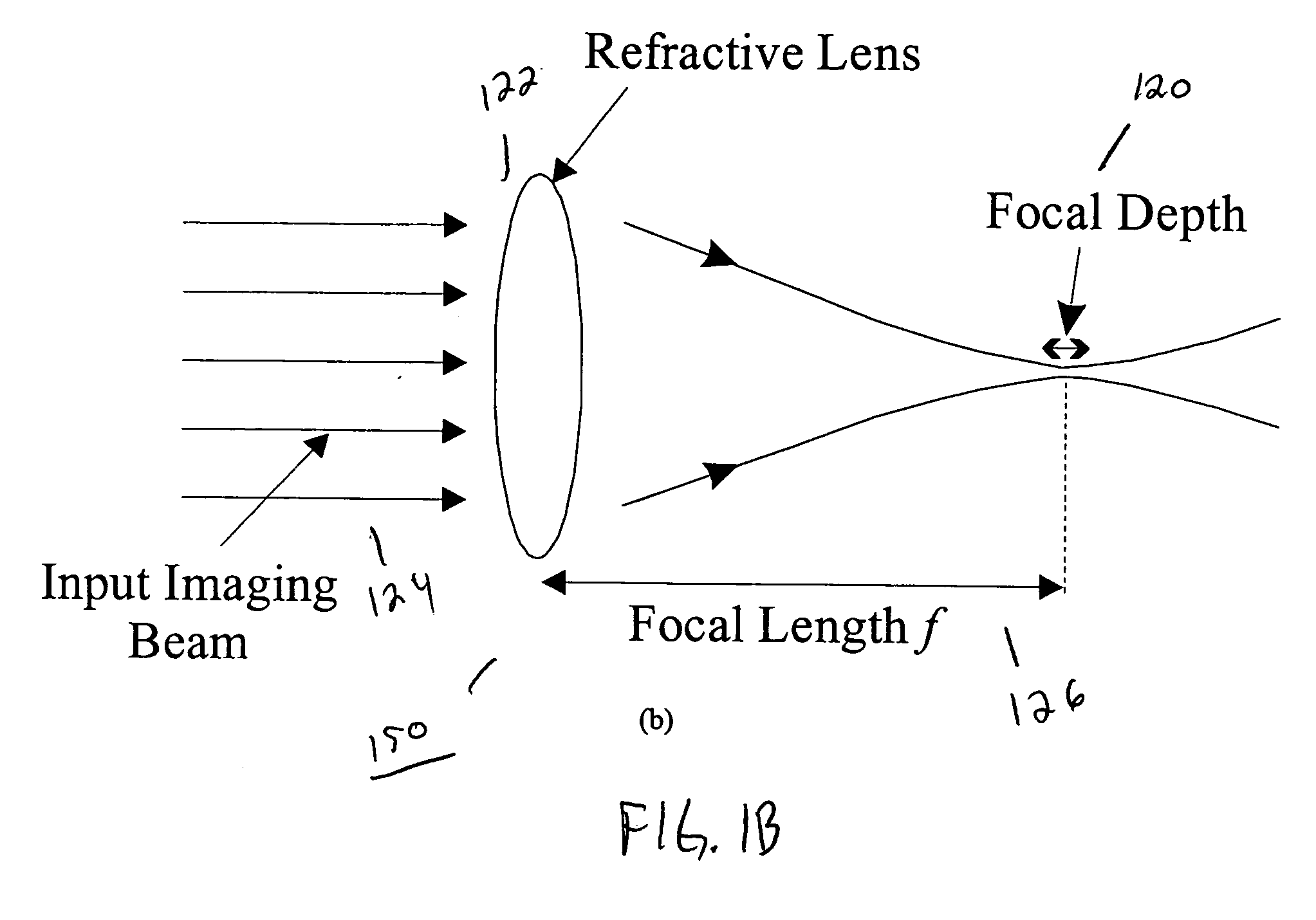Achromatic imaging lens with extended depth of focus
a technology of achromatic imaging and depth of focus, applied in the field of optics, can solve the problems of large aperture, large lateral resolution, large numerical aperture, etc., and achieve the effects of reducing chromatic aberration of incident light, extending depth of focus, and high lateral resolution of incident ligh
- Summary
- Abstract
- Description
- Claims
- Application Information
AI Technical Summary
Benefits of technology
Problems solved by technology
Method used
Image
Examples
Embodiment Construction
[0039] The present invention discloses a design for an achromatic hybrid refractive-diffractive lens that extends the depth of focus (DOF) without sacrificing the system's transverse resolution. The extended DOF lens combines a specially designed DOE that generates a long range of pseudo-non-diffractive rays with a corresponding refractive lens to diminish chromatic aberrations in the desired spectral band. Utilizing a hybrid refractive-diffractive device configuration simultaneously preserves the favorable properties of both the diffractive element (long focal depth) and the refractive lens (low chromatic aberration, high-energy concentration).
[0040] The present invention can be used with various optical wavebands for focal depth extension. The present invention operates in the entire visible waveband and extends the DOF of a lens tenfold, as shown in experimental results, without decreasing any lateral resolution. FIG. 1A shows a schematic of the hybrid lens 100 of the present in...
PUM
 Login to View More
Login to View More Abstract
Description
Claims
Application Information
 Login to View More
Login to View More - R&D
- Intellectual Property
- Life Sciences
- Materials
- Tech Scout
- Unparalleled Data Quality
- Higher Quality Content
- 60% Fewer Hallucinations
Browse by: Latest US Patents, China's latest patents, Technical Efficacy Thesaurus, Application Domain, Technology Topic, Popular Technical Reports.
© 2025 PatSnap. All rights reserved.Legal|Privacy policy|Modern Slavery Act Transparency Statement|Sitemap|About US| Contact US: help@patsnap.com



